Playing it safe
Diet Coke, Galaxy, Old Spice and KitKat are rekindling old advertising and slogans for today’s audiences. Is this the result of a creative deficit or are fears of a public backlash on social media smothering the urge to chance something new?
“We used to say to clients the biggest risk you can take is not to take a risk because very few advertising campaigns could damage a brand. In order to get a decent return on your investment you have to take some risks and try new things because that’s what engages people. I’m not sure that’s true anymore,” says Tim Lindsay, chief executive officer at creative association D&AD and former agency head at TBWA and Publicis.
Lindsay believes this is because of internet-empowered consumer groups who can respond to things they don’t like and get a reaction instantly. “Things have changed and, because of Mumsnet and countless other internet empowered groups, marketers are desperately scared of putting a foot wrong now. It doesn’t have to be their consumers, it can be anyone who happens to take umbrage and we have seen examples of it.”
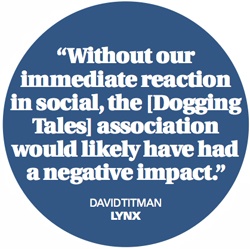
In the past month two brands have had to pull new advertising campaigns because they sparked a backlash on social media. An online video ad for soft drink Mountain Dew showed a beaten up waitress on crutches trying to identify her attackers from a line-up made up of a goat character, voiced by controversial rapper Tyler the Creator, and several black men.
Brand owner PepsiCo removed the ad from Mountain Dew’s Green Label Sound website[1] after critics blasted it for making light of violence against women and portraying racial stereotypes. PepsiCo posted on Twitter and Facebook apologising for any offence caused, including the ‘hashtag’ #fail at the end of the statement.
Just a few weeks before, Hyundai had withdrawn a controversial ad following a social media backlash over its depiction of a man attempting to commit suicide by inhaling car exhaust fumes but failing because of the clean emissions technology in the new iX35 model.
The ad was made by in-house agency Innocean Europe, part-owned by a daughter of Hyundai Motor Company’s chairman Chung Mong-Koo. While Innocean couldn’t be described as just one rogue creative agency, Hyundai UK says the brand had no involvement in the making of the film and the global parent Hyundai Motor Company claims it neither requested nor was asked to approve the ad. The brand also took to Twitter to apologise “unreservedly” for any offence caused.
So is it fear of a public mauling, as experienced by Mountain Dew and Hyundai, that’s behind a recent spate of brands - including Galaxy, KitKat and Diet Coke - returning to old, safe ideas? Predictably, those who have done so say no.
Amy Holdsworth, UK marketing director at Tetley Tea owner Tata Global Beverages, believes there is as much risk in bringing back old creative as inaugurating new, because if the revived ideas aren’t relevant and insightful today, that could be just as damaging as new ones that miss the mark.
She argues: “You wouldn’t bring back an old campaign that didn’t work. However, if the core idea and the line is still relevant, I say bring things back with aplomb.”
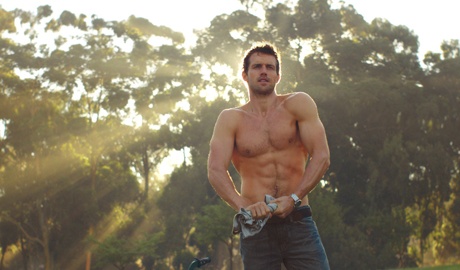
Diet Coke brought back its ‘hunk’ for the 30-year anniversary
Tetley is a prime example of a brand reviving a campaign from its past, bringing back its brand characters the Tetley Tea folk in 2010 - they first appeared 40 years ago this year. Tetley is using the characters to keep fans up-to-date with news; and they have a website, Twitter and Facebook accounts where consumers can talk to the gang.
Holdsworth also disagrees that social media is stifling creativity: “Everyone creates content these days and you can get burnt by it. But I don’t think the social media and instant feedback age we live in stifles creativity. You can’t please all the people all of the time and that’s a fact of life. You have to be mindful: there are obviously complete shockers out there, the recent Hyundai campaign being an example.”
The confectionery category has similarly seen two prominent brands call on old creative to sell products in recent months. Galaxy chocolate has re-adopted its tagline ‘Why have cotton when you can have silk’ (see Q&A) and KitKat is re-running an ad featuring two pandas rollerskating around their enclosure while an amateur photographer turns his back for a snack break. The latter spot first aired in 1989. D&AD’s Lindsay believes, especially in the confectionery category, that it is hard to introduce new ideas and campaigns because most of the brands have been around for a long time.
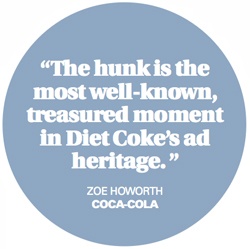
“I’ve worked on Cadbury at three different points in my career. Cadbury’s Dairy Milk was the flagship brand and it never had a great advertising campaign. It was always trying to do something new and it always slightly backfired. ‘Gorilla’ [a 2007 ad created by agency Fallon London] is obviously a glorious exception, but if you look at the previous 25 years of Cadbury’s Dairy Milk advertising, it’s all over the place.”
Speaking anonymously, one industry insider suggests that KitKat “lost the plot for a number of years” in its advertising. It introduced a raft of product variants and moved away from its ‘Have a break’ strapline, used in the panda ad. Re-running its old ads could be a sign the brand is reasserting its original positioning, particularly as competitor Twix’s ‘Pause button’ campaign took on many of the associations from which KitKat had chosen to depart.
“I think there are lots of well loved advertising campaigns that consumers want to see again, and see updated,” says Zoe Howorth, marketing director at Coca-Cola Great Britain, who is about to depart on a year’s sabbatical. “It’s about appreciating what consumers want and understanding where you have something that is well loved and stands the test of time.”
Coca-Cola brought back its ‘Diet Coke break’ hunk, stripping off his wet T-shirt to reveal rippling abs, for Diet Coke’s 30th birthday campaign this year. Howorth claims the brand would not have done so without the anniversary creating a cause to look backwards. It was also important to make it relevant to modern forms of marketing, for example social media, she adds.
“The hunk is the most well-known, treasured moment in our Diet Coke advertising heritage.
We wouldn’t have done it unless we had that moment of celebration of our past. In order to make it relevant for 2013, we launched it on Facebook and let people discover it. We had a celebrity-inspired party in London and we seeded it out as opposed to just putting it on TV, which is probably what we did to launch the Diet Coke break concept in 1994.”
Old Spice has attempted to combine the old and new worlds with a recent campaign to launch a range of scented bar soaps. The television campaign, from Wieden+Kennedy (W+K) pays tribute to the popular jingle soap commercials of the 1980s and 1990s, but is executed in an ironic style that seeks to capture the social media buzz the brand so successfully received thanks to its ‘The man your man could smell like’ ads in 2010.
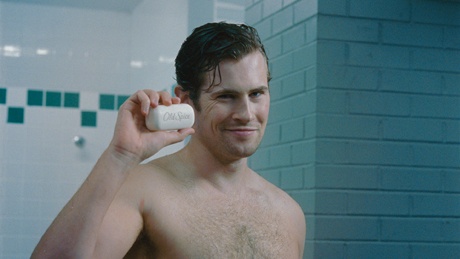
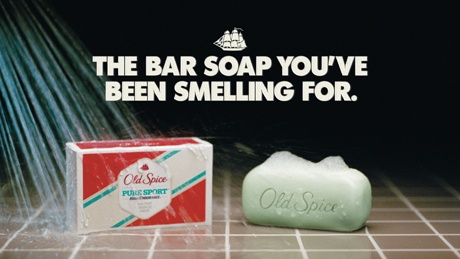
Old Spice’s campaign is an ironic take on jingles from the 1980s and 1990s
Rodrigo Coronel, communications manager at Old Spice, says: “The Old Spice brand is all about delivering humorous and fun creative campaigns. We also strive to surprise our fans with each and every new campaign. The new bar soap marketing campaign stays true to this approach. To date, the response has been fantastic, as evidenced by the popularity of the spots online and the number of views that both ads have amassed to date.”
Whether brands are going retro for good reason or because they’re too scared to try something new, there’s plenty of evidence to suggest that the potential dangers of social media that are making them more conservative can readily be turned into sources of creativity and wider reach. Those marketers and agencies that fear Twitter and Facebook could be shunning the most effective platform for launching an idea to mass popularity.
In 2012, Southern Comfort moved away from its traditional approach advertising the drink as the New Orleans party beverage, in favour of humorous creative depicting a middle-aged man in swimming trunks drinking the spirit as he walks along a beach. This created substantial buzz for the brand on social media - although a few consumers accused the brand of promoting obesity and a few didn’t quite understand the idea (see case study).
Southern Comfort marketing manager for the UK and Ireland Gwen Risdale says: “We were terrified when we broke on TV for the first time with the 60-second version, during The Inbetweeners movie. The responses on Twitter were positive but we did have some consumers saying ‘What have you done to my brand? I just don’t get it! You are promoting obesity.’”
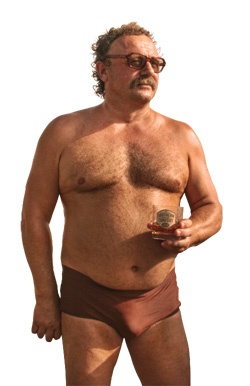
Southern Comfort worked with its agency - again, W+K - to ensure it had the right response to the negative comments and potential alienation of consumers, and claims that its fans helped explain and promote the new positioning by engaging in conversations on social media.
“That’s living in the digital arena and it’s a risk you have to take, but again it’s about being brave and believing in your agency,” adds Risdale.
In the case of Lynx, social media was the source of creative content. Lynx, whose official Twitter page is managed by agency TMW, seized an opportunity when its brand was mentioned as the favourite fragrance of people featured on Channel 4 documentary Dogging Tales, which followed aficionados of the eponymous sexual fetish.
Lynx turned the unfortunate association into an opportunity to engage with consumers already weighing in on the debate around the programme. The Lynx Effect Twitter account wrote: “Good choice of fragrance over on @Channel4 - guaranteed to get a bit more attention, whatever the situation..! #DoggingTales”
The following day, TMW’s Lynx social team produced a spoof photo where they supposedly held crisis talks to deal with the situation. The picture shows the team all wearing masks similar to those of the doggers who appeared in the documentary.
Lynx picked up around 10,000 mentions in the three days that Dogging Tales was talked about on Twitter. David Titman, senior brand manager at Lynx, says: “Without the immediate reaction in social this would likely have had a negative impact - you have to remember that this wasn’t publicity that we could control and it’s not an association that many brands would feel comfortable playing on.
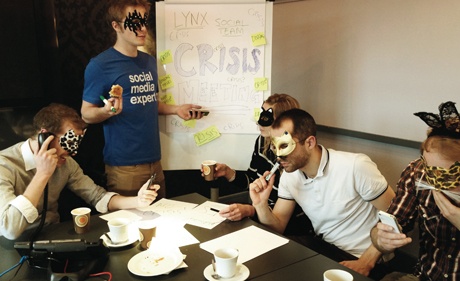
“There was plenty of conversation happening live online during the documentary and a lot of it included mentions of Lynx. From our perspective it actually provided a good opportunity to showcase the humour and personal tone of the brand, rather than initiating some kind of corporate crisis meeting, as some people on Twitter expected and were very vocal about.”
While Lynx and Southern Comfort have experienced a positive response where there could have been disaster, it’s clear that brands can no longer expect to escape public reactions, both good and bad, on social media. But equally, that could have everything or nothing to do with their marketing and could be fully in or fully out of their control. Either way, social networks will inevitably impact on every brand’s reputation at one time or another.
As Coca-Cola’s Howorth notes: “There is no point being scared of social media, it’s how people operate today. All consumers, regardless of age, want to have a point of view - these are big brands and we want them to be a part of culture.”
Marketers might currently be too risk-averse and some agencies could well be lacking creativity, but those that understand how to take a calculated risk are those that will stand out.
References
- ^ removed the ad from Mountain Dew’s Green Label Sound website (www.marketingweek.co.uk)









